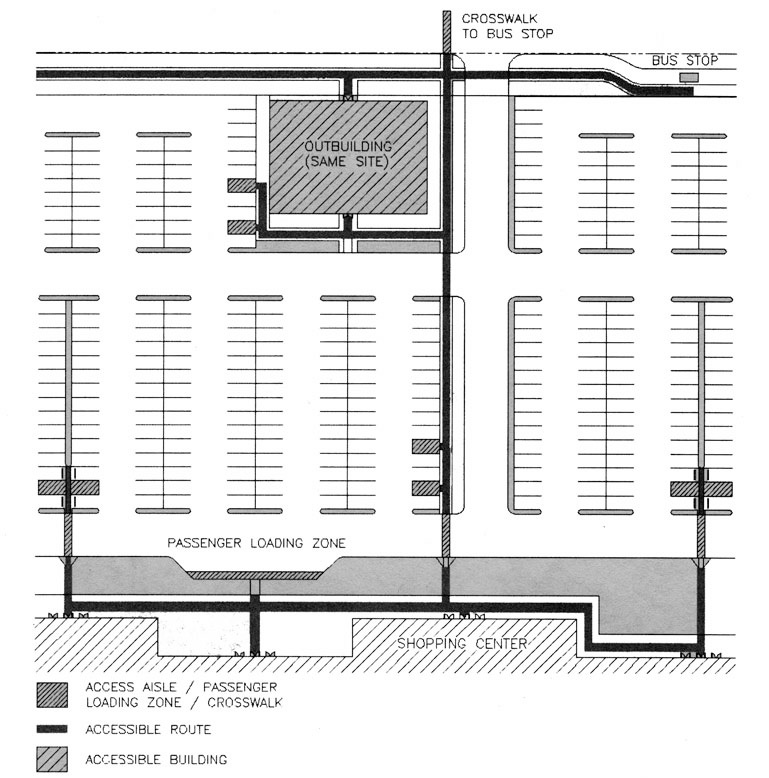Scoping [4.1.2(1), 4.1.3(1)] and Location [4.3.2]
Clear width, surface texture, running and cross slope, and the treatment of changes in level help determine the usability of walking surfaces by people with mobility impairments. At least one accessible route within the boundary of sites must connect accessible building entrances to:
-
accessible parking and passenger loading zones
-
public transportation stops
-
public streets or sidewalks

An accessible route is not required to connect directly to site boundaries not bordered by a pedestrian way (e.g., where site entry is by vehicle only). Recommendations: Where transit stops are not located within site boundaries, accessible routes should be configured to connect with public rights-of-way to provide convenient access between them and the site. It is important that accessible routes coincide with general routes to the greatest degree possible for equality and convenience. Where an alternate route is necessary for access, travel distances from the general route needs to be minimized. Signage may be necessary along routes to minimize confusion or back-tracking.
At least one accessible route is required to connect buildings, facilities, elements, and spaces that are on the same site. Recommendation: Accessible routes can cross vehicular ways but it is recommended that they be marked as a pedestrian crossing.

User Comments/Questions
Add Comment/Question